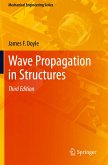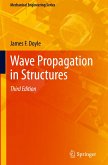This advanced and graduate-level text and self-tutorial teaches readers to understand and to apply analytical design principles across the breadth of the engineering sciences.
Emphasizing fundamentals, the book addresses the stability of key engineering elements such as rigid-body assemblage, beam-column, beam, rigid frame, thin plate, arch, ring, and shell.
Each chapter contains numerous worked-out problems that clarify practical application and aid comprehension of the basics of stability theory, plus end-of-chapter review exercises.
Others key features are the citing and comparison of different national building standards, use of non-dimensional parameters, and many tables with much practical data and simplified formula, that enable readers to use them in the design of structural components.
First six chapters most suitable for undergraduate-level study and remaining chapters for graduate-level courses.
Emphasizing fundamentals, the book addresses the stability of key engineering elements such as rigid-body assemblage, beam-column, beam, rigid frame, thin plate, arch, ring, and shell.
Each chapter contains numerous worked-out problems that clarify practical application and aid comprehension of the basics of stability theory, plus end-of-chapter review exercises.
Others key features are the citing and comparison of different national building standards, use of non-dimensional parameters, and many tables with much practical data and simplified formula, that enable readers to use them in the design of structural components.
First six chapters most suitable for undergraduate-level study and remaining chapters for graduate-level courses.
From the reviews of the first edition: "It is vitally important that all structures (and therefore all parts of a structure) are stable: buildings or aircraft wings must not buckle or break in normal use. ... Murari Gambhir's ... book attempts to address this issue. ... It is suited to masters-level courses in advanced structural analysis ... . it is an excellent, comprehensive guide to the mathematical analysis of the stability of various structural components, and it should prove a useful reference for the specialist academics at whom it is aimed." (Philip Garrison, The Times Higher Education Supplement, November, 2005)








